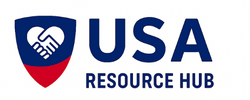Rent can feel relentless. For many households, it’s the largest monthly expense, and when income dips or emergencies strike, the pressure builds fast. While federal programs tend to dominate the conversation, there are lesser-known options that may offer real support, provided you know where to look.
This isn’t about silver bullets or blanket solutions. It’s about uncovering practical, often overlooked resources that could help you stay housed and financially stable.
Local Emergency Rental Assistance Funds
Cities and counties across the country quietly operate emergency rental assistance programs. These are often funded through redirected federal aid or local budgets. Eligibility varies, and some programs prioritize families with children, seniors, or individuals with disabilities.
Checking with your city’s housing department or a nearby community action agency may reveal options that aren’t listed on national directories. Denial from a federal program doesn’t always mean local support is off the table. Criteria can differ, and smaller programs may offer more flexibility.
Utility Companies with Rent Support Tie-Ins
Some utility providers collaborate with nonprofits to offer rent-related support. These programs typically target customers who are behind on both rent and utility bills, recognizing that housing and energy insecurity often go hand in hand.
Hardship funds, payment matching programs, or referrals to partner agencies may be available. These options rarely appear on the main billing page, so it helps to explore the “assistance” or “community support” sections, or speak directly with a representative.
Faith-Based and Community Organizations
Churches, mosques, synagogues, and community centers sometimes serve as intermediaries for rent relief funds. A few receive grants specifically to help local residents avoid eviction. Others may offer one-time payments, housing vouchers, or connections to landlords willing to negotiate.
These organizations tend to operate quietly. Word-of-mouth and local networks often play a bigger role than online listings. Asking around in your neighborhood or within your faith community could uncover support that isn’t widely advertised.
Employer-Based Hardship Grants
Large employers and union-backed workplaces occasionally offer hardship grants to employees facing financial distress. These grants may cover rent, medical bills, or other urgent expenses. Typically managed through HR or an employee assistance program, they’re designed to be confidential and non-repayable.
Reviewing your benefits package or speaking with HR might reveal support you didn’t realize was available. Many employees overlook these programs simply because they’re buried in internal documentation.
Crowdsourced and Peer-to-Peer Platforms
Platforms like Modest Needs or GoFundMe have helped renters bridge short-term gaps. Modest Needs, for instance, offers grants to working individuals who struggle with unexpected expenses, including rent.
These platforms require effort. Applications must be clear, and campaigns need to resonate with potential donors. Still, for renters who fall just outside the eligibility lines of government programs, peer-to-peer support may offer a viable alternative.
Rent Negotiation and Mediation Services
Some cities offer mediation services to help tenants and landlords reach temporary agreements. These services may facilitate reduced rent, deferred payments, or alternative arrangements without involving the courts.
Legal aid groups and nonprofit coalitions often run these programs. Even when direct financial aid isn’t available, a mediated agreement can buy time to stabilize income or access other forms of support.
State-Level Housing Stability Initiatives
States have launched their own housing stability initiatives beyond federal programs. These may include rent relief funds, eviction diversion programs, or legal aid for tenants. A few states also offer tax credits or rebates for renters, especially those with dependents or low income.
Exploring your state’s housing or human services website may uncover options that aren’t listed on national portals. These programs vary widely, so local research matters.
Final Thoughts
Rent relief isn’t always obvious. The most visible programs often come with long waitlists or strict eligibility rules, leaving many renters in limbo. Beneath the surface, though, alternative paths exist. Quietly funded, locally managed, or community-driven programs may offer the support you need.
Stacking small wins can be more effective than chasing a single solution. Whether it’s a local fund, a workplace grant, or a mediated agreement, each step helps protect your housing and rebuild financial stability.
Assuming you’ve exhausted every option may close doors prematurely. The help you need could be closer than expected, it just might not be where you thought to look.


Leave a Reply